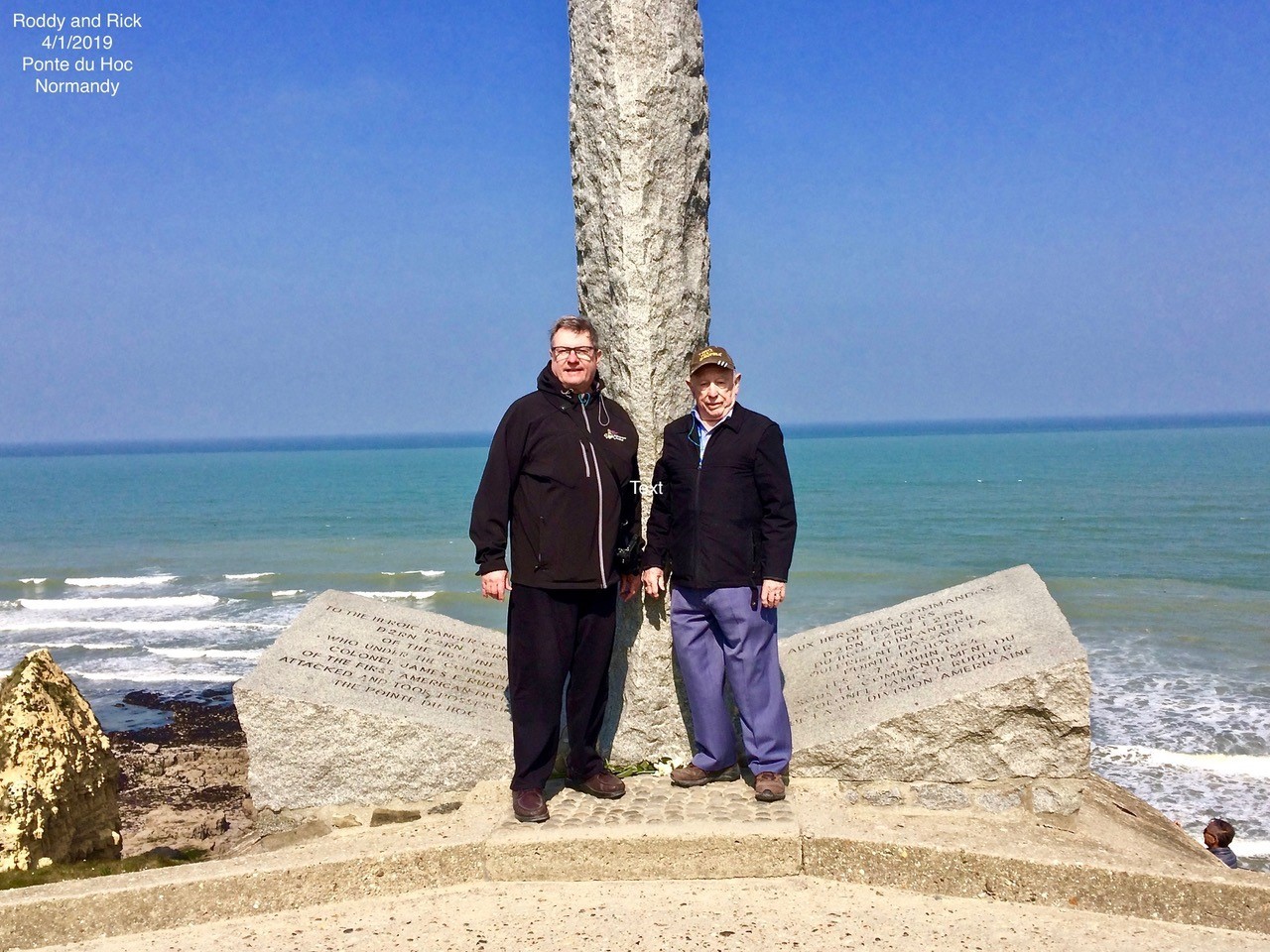 Roddy Peeples (NAFB Emeritis Member, Dallas, Texas) made a long-desired trip in late March and April to the D-Day landing beaches and, even more specifically, Ponte du Hoc. His son, Rick (left), joined him for the trip. “While we visited lots of the sights and attractions in Paris and Normandy, my main purpose for going was a desire for many years to see where Lt. Col. James Earl Rudder led more than 200 ‘Rudder’s Rangers’ in scaling the cliffs there to take out a German 155mm gun emplacement that threatened the ships disembarking U.S. troops from the English Channel to the beaches, but also Omaha and Utah Beaches themselves. It’s about halfway between the two beaches, and the gun had a 15-mile range, so taking it out, which Rudder’s men did, was a deciding factor in the D-Day invasion,” Peeples said. “I did not know Rudder myself. After the war, he retired as a Major General in the U.S. Army Reserve. In the late ’50s and ’60s, Rudder was president of Texas A&M University.” Peeples’ father, Rufus, was active his entire adult life in the affairs of Texas A&M. He was president of the Association of Former Students in the ’40s, an eight-year member of the Texas A&M Board of Directors in the late ’40s and early ’50s, and later a member of the Century Council. So, he became a close acquaintance of General Rudder, who was also an Angus breeder from Brady, Texas, as was Peeples’ dad from Tehuacana, Texas. “So, they had lots to talk about, A&M and Angus cattle and ranching in general. This relationship kindled my interest in Ponte du Hoc and its importance on D-Day and the man who led that raid up those cliffs and later became president of my alma mater and a friend of my dad.” Roddy Peeples served as NAFB President in 1982. He was named Farm Broadcaster of the Year in 1992 and was inducted into the NAFB Hall of Fame in 2001.
Roddy Peeples (NAFB Emeritis Member, Dallas, Texas) made a long-desired trip in late March and April to the D-Day landing beaches and, even more specifically, Ponte du Hoc. His son, Rick (left), joined him for the trip. “While we visited lots of the sights and attractions in Paris and Normandy, my main purpose for going was a desire for many years to see where Lt. Col. James Earl Rudder led more than 200 ‘Rudder’s Rangers’ in scaling the cliffs there to take out a German 155mm gun emplacement that threatened the ships disembarking U.S. troops from the English Channel to the beaches, but also Omaha and Utah Beaches themselves. It’s about halfway between the two beaches, and the gun had a 15-mile range, so taking it out, which Rudder’s men did, was a deciding factor in the D-Day invasion,” Peeples said. “I did not know Rudder myself. After the war, he retired as a Major General in the U.S. Army Reserve. In the late ’50s and ’60s, Rudder was president of Texas A&M University.” Peeples’ father, Rufus, was active his entire adult life in the affairs of Texas A&M. He was president of the Association of Former Students in the ’40s, an eight-year member of the Texas A&M Board of Directors in the late ’40s and early ’50s, and later a member of the Century Council. So, he became a close acquaintance of General Rudder, who was also an Angus breeder from Brady, Texas, as was Peeples’ dad from Tehuacana, Texas. “So, they had lots to talk about, A&M and Angus cattle and ranching in general. This relationship kindled my interest in Ponte du Hoc and its importance on D-Day and the man who led that raid up those cliffs and later became president of my alma mater and a friend of my dad.” Roddy Peeples served as NAFB President in 1982. He was named Farm Broadcaster of the Year in 1992 and was inducted into the NAFB Hall of Fame in 2001.
